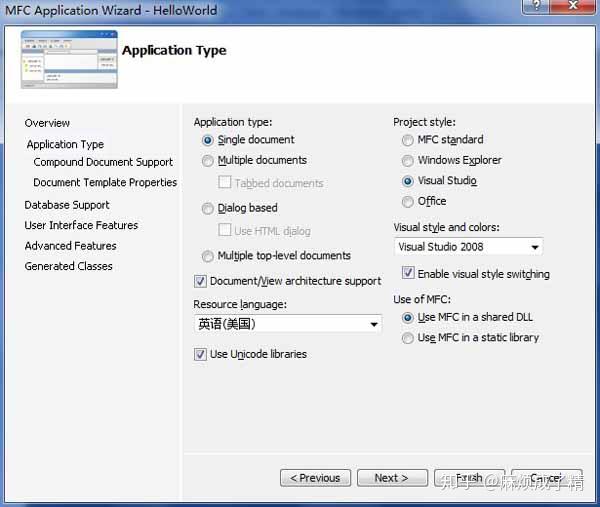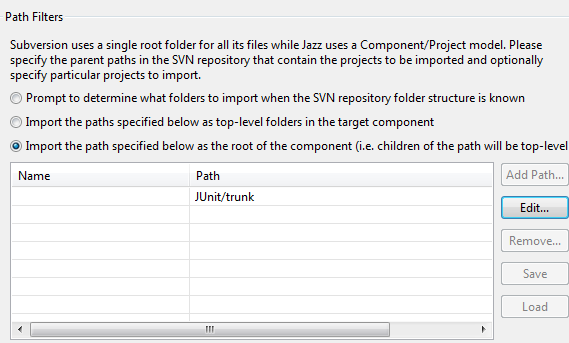

- #MFC APPLICATION WIZARD MULTIPLE TOP LEVEL DOCUMENTS SOFTWARE#
- #MFC APPLICATION WIZARD MULTIPLE TOP LEVEL DOCUMENTS CODE#
- #MFC APPLICATION WIZARD MULTIPLE TOP LEVEL DOCUMENTS WINDOWS#
If (!m_wndInvisible.Creating a simple dialog application Windows of type Dialog Based Application by using MFC ( Microsoft Foundation Classes) libraryĪfter loading MS Visual Studio you need to call command File -> New -> Project LPCTSTR pstrOwnerClass = AfxRegisterWndClass(0) If (!SECToplevelFrame::PreCreateWindow(cs)) Then override CMainFrame::PreCreateWindow:īOOL CMainFrame::PreCreateWindow(CREATESTRUCT& cs)
#MFC APPLICATION WIZARD MULTIPLE TOP LEVEL DOCUMENTS CODE#
See the code snippet below borrowed from Chris's article and modified to replace CFrameWnd with SECToplevelFrame.Ĭlass CMainFrame : public SECToplevelFrame I tried it in my MTI based application and the top level windows no longer show up in the task bar, but they can still be minimized on the desk top. I to use the MTI from Stingray, and if you take a gander at Chris Maunder's article "Creating an application with no taskbar icon" in the "Doc/View" section and implement his code snippet, your problem is solved.
#MFC APPLICATION WIZARD MULTIPLE TOP LEVEL DOCUMENTS SOFTWARE#
Hi, my name is Rob Krakora, and I am a Software Engineer with Thomson Consumer Electronics (RCA) in Indianapolis, Indiana. This article is a good start, but is really a kludgy hack when you consider how it's done, what with main window lists and all.Īlso, there are several MFC samples which illustrate multi-threadedness, and I'm sure there's a MultiPad version which is multi-UI-threaded. To start, look up AfxBeginThread() in the help.

Notice that CWinApp isn't derived from CCmdTarget directly anymore it's now derived from CWinThread, the base-class for all user-interface threads. The main window that you see is actually the main window of the only user-interface thread your program creates. However, anytime a Window appears on the screen, it's part of a "user-interface thread." The way CWinApp is implemented was changed in MFC 4.2 under VC++ 6. When you have a thread that's just a worker function, we call it a "worker thread " an example is a function that performs some math. Multiple Top-Level Windows in Internet Explorer and Netscape are seperate threads of the same process, and it's OK they have Taskbar entries. // because top-level window processing is based on both WM_CLOSE // and WM_DESTROY being processed, we make sure that all messages // have been processed before continuing // while( ::PeekMessage( &msg, NULL, 0, 0, PM_REMOVE )) While ( ppFrame != m_listMainFrames.end() ) Std::list::iterator ppFrame = m_listMainFrames.begin() // clear out pending messages // while( ::PeekMessage( &msg, NULL, 0, 0, PM_REMOVE )) Void CMultiTopApp::CloseFramesKindOf( const CRuntimeClass * pClass) *Ĝlose frames of the appropriate type, as long as it is not the main window Of course you need to have ways of creating new TLWs and probably you want to have a command to close all the windows and shut down your app, so the demo project includes those functions.įirst, a handler for the "New Window" menu item creates new TLWs.


MFC, out of the box, supports three interface models, MDI, SDI, and dialog based.


 0 kommentar(er)
0 kommentar(er)
